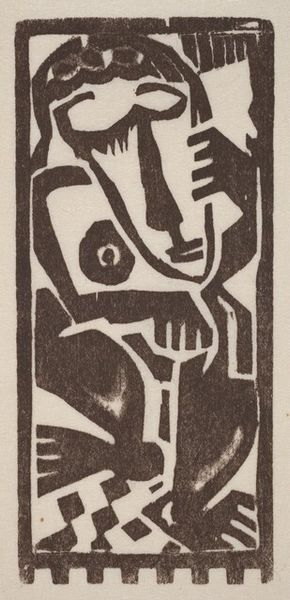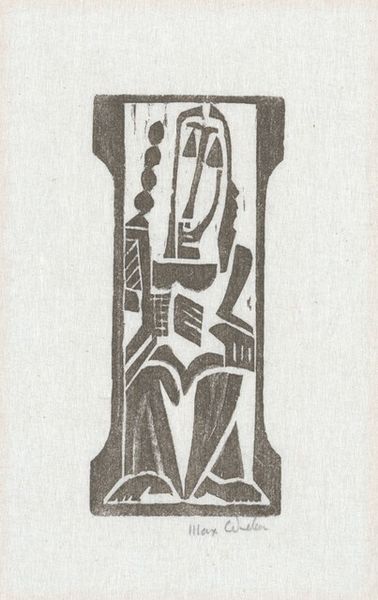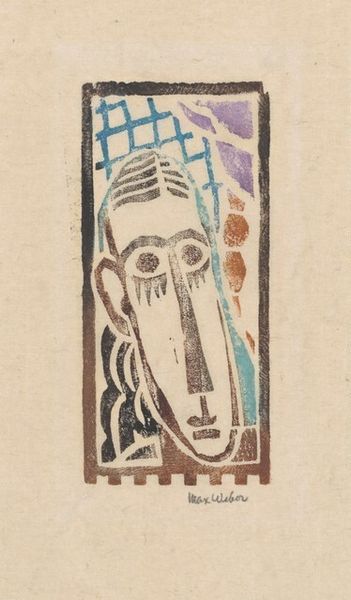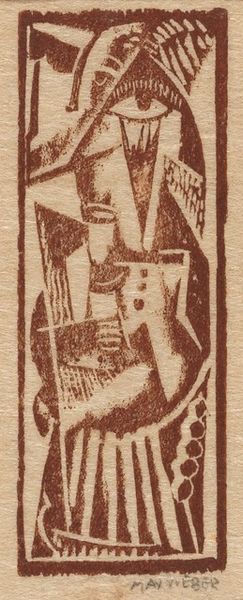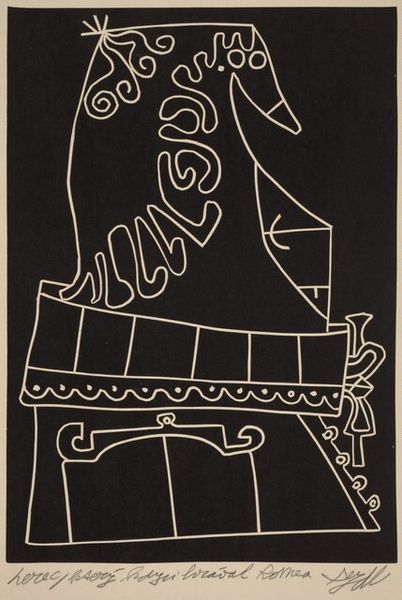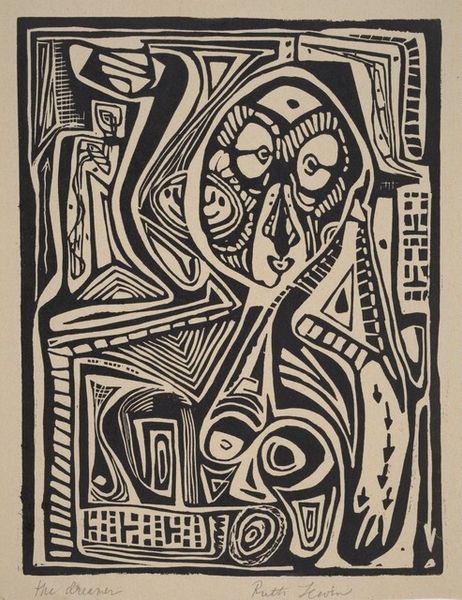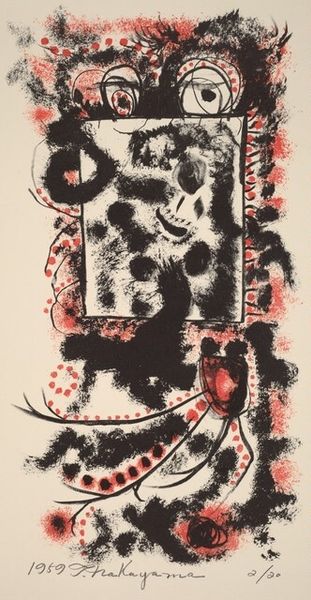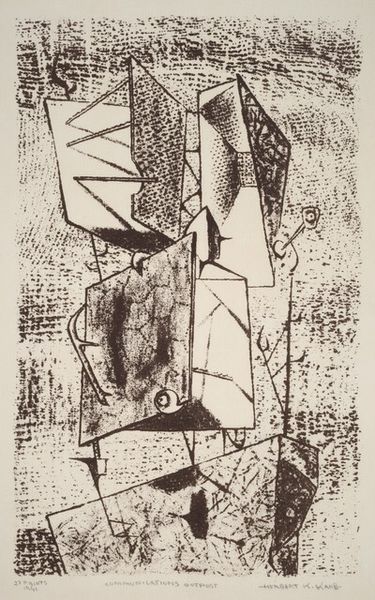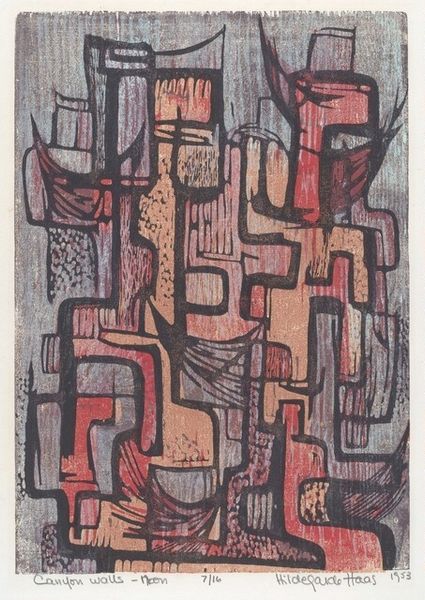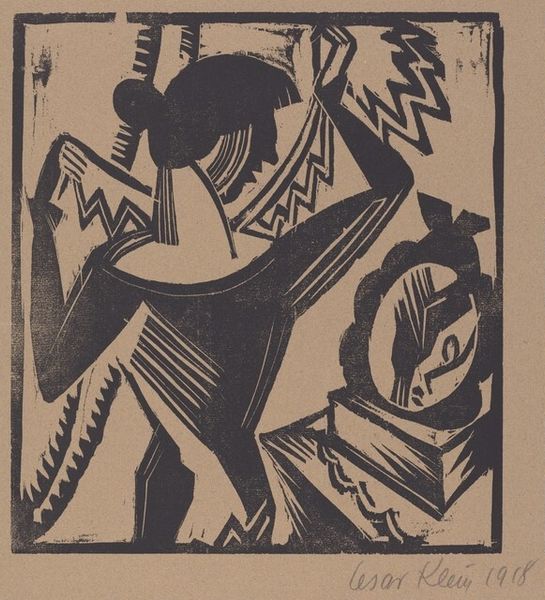
graphic-art, print, linocut
#
portrait
#
graphic-art
#
cubism
#
art-nouveau
#
linocut
# print
#
linocut
#
linocut print
#
abstraction
#
modernism
Dimensions: image: 10.7 × 4.8 cm (4 3/16 × 1 7/8 in.) sheet: 25.8 × 16.5 cm (10 3/16 × 6 1/2 in.)
Copyright: National Gallery of Art: CC0 1.0
Editor: Max Weber's "Cubist Head," made between 1919 and 1920 using linocut, feels very...graphic, almost like a blueprint for a face. What do you see in this piece that maybe I'm missing? Curator: This linocut presents us with a compelling arrangement of symbols. The fragmented features, reduced to geometric forms, aren’t simply abstract; they speak to the shattering of pre-war certainties. Notice how the artist juxtaposes seemingly unrelated elements: What emotional effect do those three red dots on the figure create? Editor: They feel a bit out of place, honestly. Almost like an afterthought, but they do draw the eye. Is there any symbolic significance to them? Curator: Precisely. Their starkness amidst the earth tones may reference the trauma experienced during the Great War or, perhaps, even represent vital life forces or spiritual entities that haunt our perceptions of wholeness. Considering this work was created during the interwar period, it seems unlikely that it is merely decorative. This layering speaks to the human condition after the first great global trauma. Editor: I never would have picked up on that. So, Weber isn’t just playing with shapes but actively commenting on society. That gives me a lot to think about regarding abstraction. Curator: Exactly! Each geometric element functions as a visual signifier. Art-nouveau blends with the flattened planes, adding to a new visual language in which collective cultural memory blends into the artist's personal reflection on identity and modernity. What we initially see as mere abstraction turns into a potent commentary on the fragmentation of the human experience, particularly after experiencing mass trauma. Editor: I guess I was so focused on the Cubist aspects that I didn't really consider the larger implications. Thanks for helping me understand it. Curator: My pleasure. I trust that reflecting on the relationship of cultural symbols and historical contexts will continue enriching your understanding and appreciation of art.
Comments
No comments
Be the first to comment and join the conversation on the ultimate creative platform.

